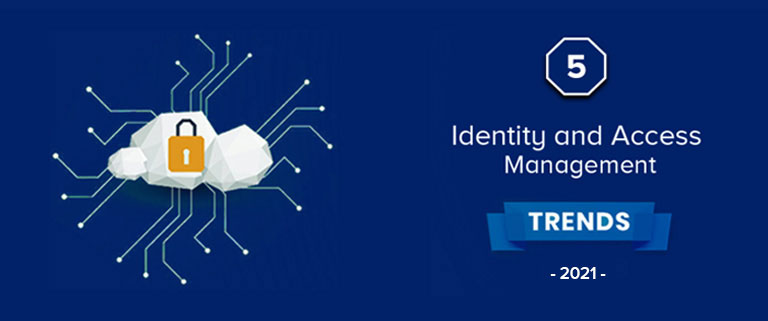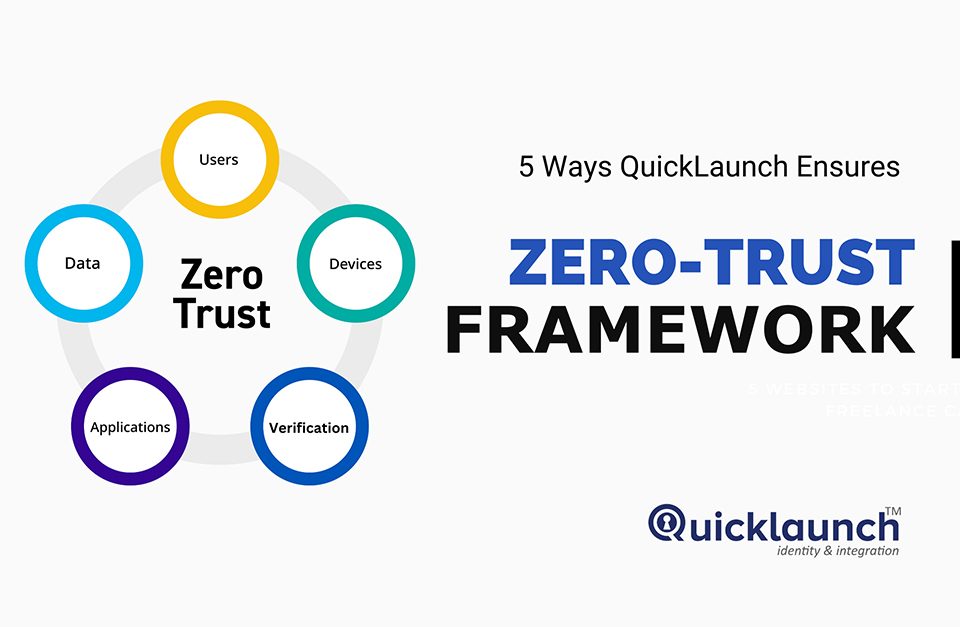
QuickLaunch Announces Commitment to Global Efforts Advocating for Cybersecurity and Online Behavior Change during Cybersecurity Awareness Month
February 16, 2022
3 Ways Identity and Access Management Saves Time, Money, and Resources
March 8, 2022
Modern-day identity environments are becoming complex, requiring IT leaders to evolve their Identity and Access Management (IAM) infrastructure. The adoption of microservices architectures, move to the cloud, digitalization of modern world and increase in cybercrime incidents have expanded the use cases for IAM.
Gone are the days when we thought lengthy passwords would keep us safe and when two-factor authentication (SMS as second factor) was considered a strong security measure. IAM space is constantly evolving. Organizations need to keep pace with cutting-edge trends in identity and access management.
Identity is becoming a key business driver for organizations. Businesses using IAM solutions accomplish several goals including:
- Manage user identities within the organization
- Centralize access control by managing who has access to what
- Reduce data breaches
- Optimize organizational costs
- Achieve regulatory compliance
1. Time to Make MFA More Secure
According to Ponemon Institute, $3.72M is the total average cost of a data breach. And according to 2017 Verizon Data Breach Investigations Report, over 90% of breaches involve some sort of phishing. But, most of the MFA solutions are not adept at protecting against these attacks.
Every organization acknowledges the need of a powerful MFA solution, but feel that their current MFA solutions aren’t keeping up with security. Adaptive Authentication is the next generation of MFA that utilizes machine learning capabilities to detect suspicious user behavior.
Adaptive Authentication uses user login information such as time of login, browser, device, geographic location and other factors to determine how authentic a login attempt is. If a login attempt is found to be suspicious, the system will prompt the user with an MFA request to authenticate them.
2. Introduction to Artificial Intelligence
Artificial Intelligence (AI) is powering identity solutions learning from millions of transactions, user behavior and documents to spot anomalies. AI-powered identity solutions will be able to better combat fraud.
Industry leaders envision a future where AI will monitor computer sessions identifying if a real person is accessing the applications or if a session is abnormal or the result of a breach. AI will use combination of biometrics and user behavior to find out if that person poses a risk to security. Artificial Intelligence learning about the identity of users and their behavior dynamically is still the future of technology.
3. Consent and Privacy
Users are more concerned about their data privacy than ever before. In May 2018, GDPR (General Data Protection Regulation) has been implemented with an intention to strengthen data protection within the European Union. This regulation will impact organizations across the globe, especially those handling data of companies in Europe. New regulations require companies to gather consent to store and / or use personal information of users.
4. Implementing IAM across Hybrid On-Premises and Cloud Resources
It is hard to ensure that every app and resource is well integrated into a single IAM suite (think Azure in the cloud and Windows on-premises) unless you’re running a homogeneous network. Developers feel irritated building new app connectors that can integrate with most IAM solutions, and the IT department will find it hard retrofitting all existing on-premises apps.
IAM solutions that haven’t been designed keeping hybrid IT in mind might add risks to security as well as increase organizational costs sacrificing user experience. Hybrid IAM solutions will ensure both on-premises and cloud applications are integrated into single IAM suite.
5. Biometric Authentication will go mainstream
Experts used to consider passwords a balanced tool for cybersecurity. But hackers now have access to tools for cracking most users’ passwords. While MFA can become your organization’s go-to authentication policy, no cybersecurity solution can prevent 100% threats. MFA can step-up authentication while deflecting experienced hackers and insider threats.
Biometric authentication capabilities can add an additional layer of security to your authentication software. Hackers can’t phish biometrics. It can be the most impeccable feature of your identity and access management solution highly contributing to organizational security.
Identity and access management is evolving. The vendors keeping pace with future IAM trends will stay in the league, the others might flourish with time. As we are moving with the digital age, IAM adoption rates are on a high. A powerful IAM suite having a solid future roadmap is the key to organizational success.




